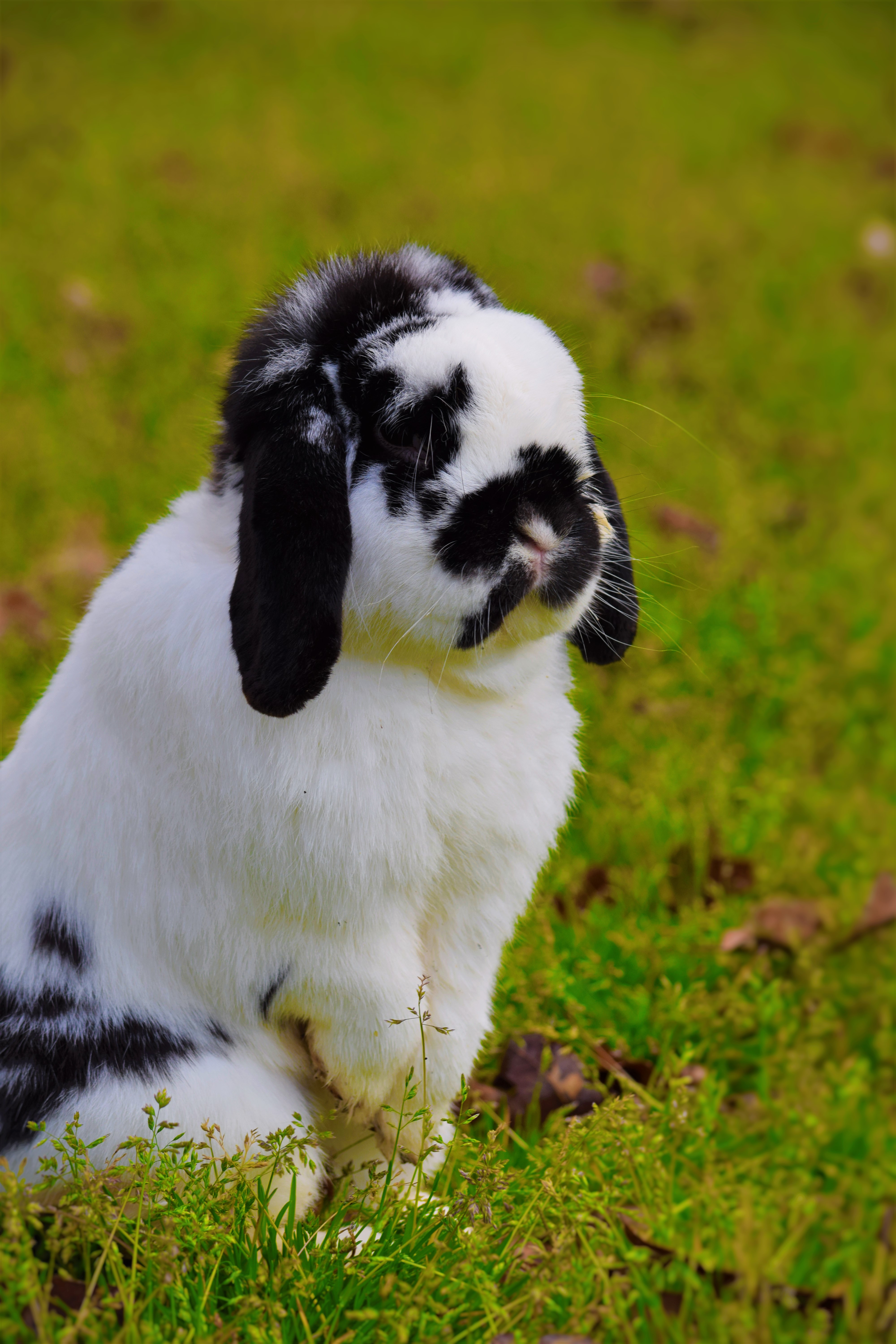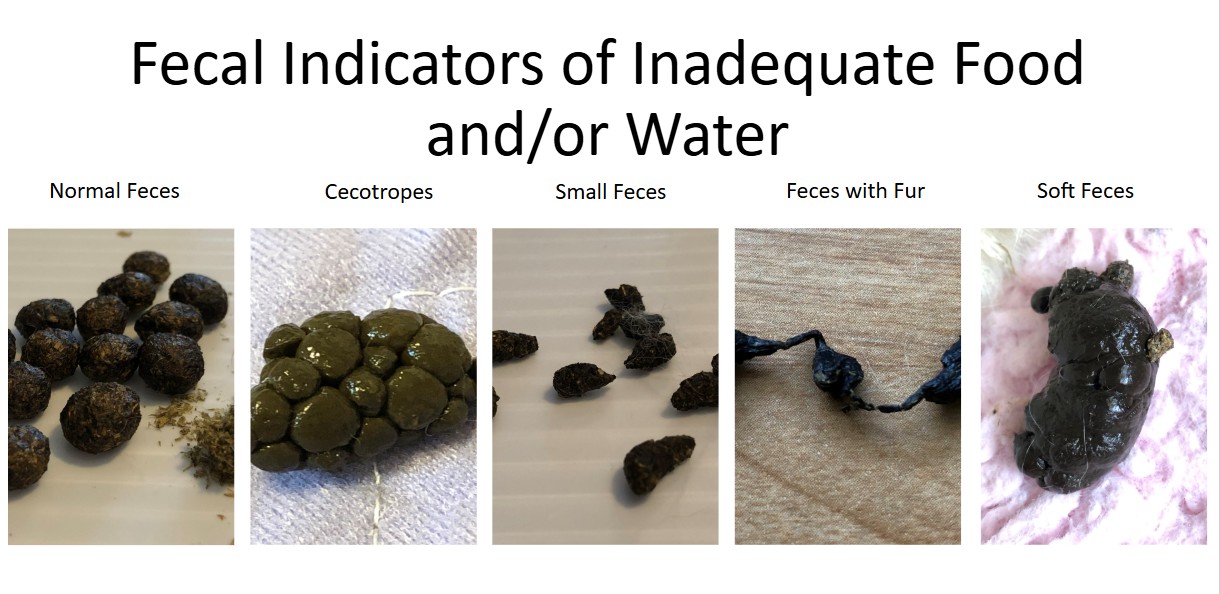Easter Bunnies: Considerations Before Buying a Pet Rabbit
go.ncsu.edu/readext?1066235
en Español / em Português
El inglés es el idioma de control de esta página. En la medida en que haya algún conflicto entre la traducción al inglés y la traducción, el inglés prevalece.
Al hacer clic en el enlace de traducción se activa un servicio de traducción gratuito para convertir la página al español. Al igual que con cualquier traducción por Internet, la conversión no es sensible al contexto y puede que no traduzca el texto en su significado original. NC State Extension no garantiza la exactitud del texto traducido. Por favor, tenga en cuenta que algunas aplicaciones y/o servicios pueden no funcionar como se espera cuando se traducen.
Português
Inglês é o idioma de controle desta página. Na medida que haja algum conflito entre o texto original em Inglês e a tradução, o Inglês prevalece.
Ao clicar no link de tradução, um serviço gratuito de tradução será ativado para converter a página para o Português. Como em qualquer tradução pela internet, a conversão não é sensivel ao contexto e pode não ocorrer a tradução para o significado orginal. O serviço de Extensão da Carolina do Norte (NC State Extension) não garante a exatidão do texto traduzido. Por favor, observe que algumas funções ou serviços podem não funcionar como esperado após a tradução.
English
English is the controlling language of this page. To the extent there is any conflict between the English text and the translation, English controls.
Clicking on the translation link activates a free translation service to convert the page to Spanish. As with any Internet translation, the conversion is not context-sensitive and may not translate the text to its original meaning. NC State Extension does not guarantee the accuracy of the translated text. Please note that some applications and/or services may not function as expected when translated.
Collapse ▲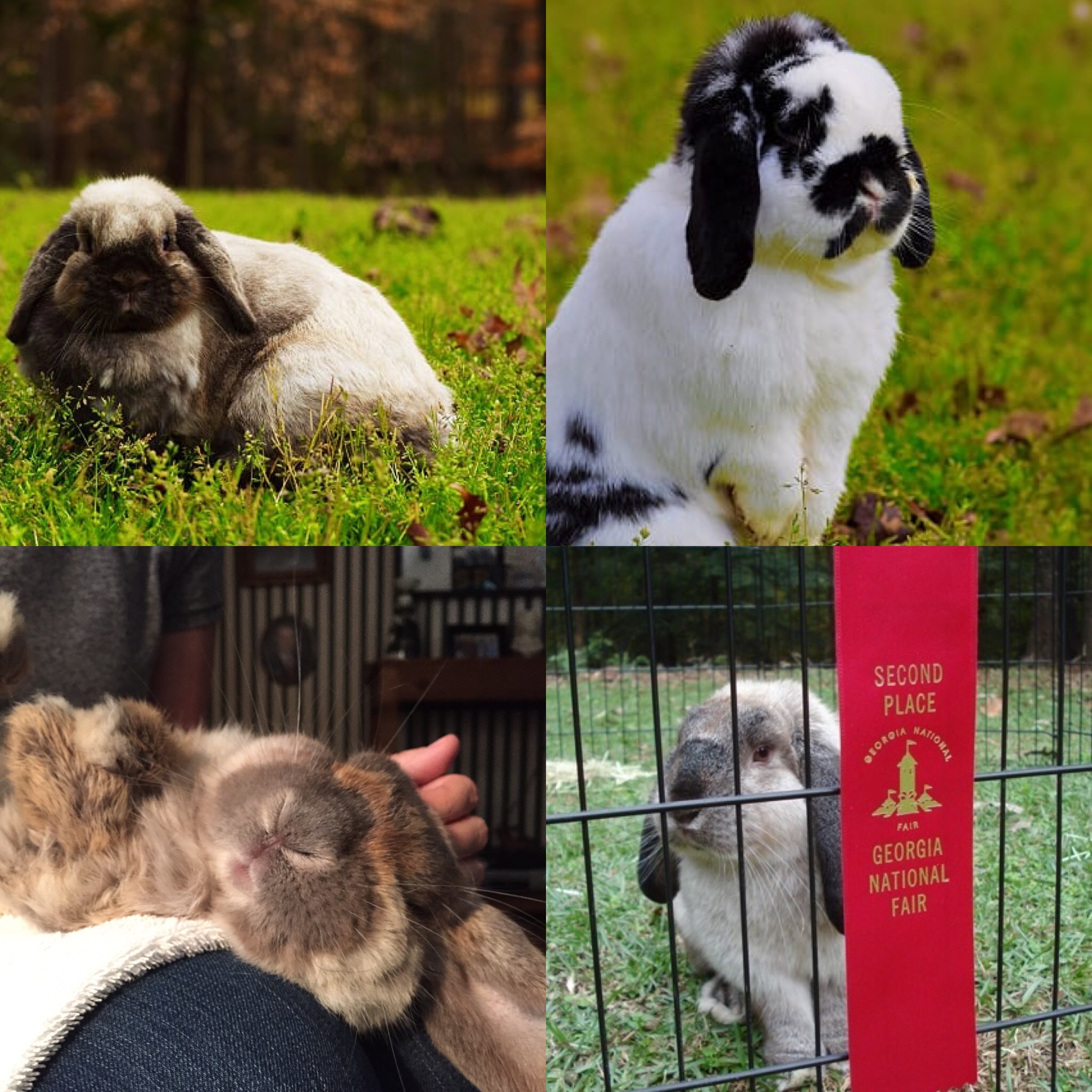 With Easter coming up, many parents will be faced with requests from their children to get a pet rabbit. While most people have at some point provided for a dog or cat (even if imperfectly), the minimum care required for a pet rabbit is often misunderstood even by the savviest of animal lovers. This article is being written after years of mistakes made by myself, so trust me when I say that I understand that it can be a lot to keep up with.
With Easter coming up, many parents will be faced with requests from their children to get a pet rabbit. While most people have at some point provided for a dog or cat (even if imperfectly), the minimum care required for a pet rabbit is often misunderstood even by the savviest of animal lovers. This article is being written after years of mistakes made by myself, so trust me when I say that I understand that it can be a lot to keep up with.
To start, let’s clear up some very broad misconceptions. Rabbits are not rodents (i.e., they do not fall under the taxonomic classification of rodentia). Rabbits are lagomorphs, which is a taxonomic classification that includes hares (which is an entirely different species than rabbits) and pikas. While on this part of the discussion, wild rabbits (e.g., the eastern cottontail) and domestic rabbits are also different species – meaning that a wild rabbit and a domestic rabbit are virtually unable to breed with each other (i.e., the interbreeding is scientifically possible but has numerous hurdles and has never been recorded as occurring successfully). Domestic rabbits (which I will simply refer to as ‘rabbits’ for most of this article) lack the survival instincts to survive in the wild, which makes the all-too-common abandonment of many pet rabbits a few weeks after Easter a death sentence for them. During my rabbit welfare seminars, one of my go-to lines was that “a pet rabbit’s lifespan in the wild is measured in hours, not months or years.” Notably, abandoning pets, including rabbits, is usually a violation of county animal welfare ordinances too.
Rabbit life span is perhaps the most misunderstood aspect of purchasing a pet bunny. Studies have been conducted that illustrate public perception of pet rabbits as having a life span of as low as one or two years. In reality, a pet rabbit can live ten years or longer with basic care needs being met. Assuming proper care (which this article will show is not particularly hard), life span is more dependent on the size of the rabbit. Larger rabbit breeds, like Flemish Giants that can reach 30-40 pounds, will have an average life span of 4-6 years. Smaller rabbit breeds, like Netherland Dwarves that stay around 2 pounds, will have an average life span of 8-10 years. In other words, a pet rabbit should be considered a ten-year commitment.
So, what is proper care?
Generally speaking, rabbit care can be broken down into four main categories: proper food/water, proper shelter, weather monitoring, and basic veterinary issues to look for. In other words, it is very much possible to easily and inexpensively have a pet rabbit if you follow just a few steps!
Proper Food and Water
The primary source of nutrition in a rabbit’s diet should be timothy hay, which can be purchased at most any Walmart or Tractor Supply, but also is available in fresher and larger quantities from small farms online. Timothy hay pellets are also an option for pickier rabbits, but chewing unprocessed timothy hay is a rabbit’s best defense against malocclusion (discussed down below in the veterinary issues section). Generally, if a rabbit is showing a preference for timothy hay pellets, an owner should provide some chew toys for the rabbit to avoid malocclusion. Moreover, rabbit owners should avoid ‘fancy’ rabbit pellet mixes with things like nuts and corn mixed into them because a rabbit’s digestive tract is not strong enough to properly digest those pieces. Alfalfa hay can be given, but only as a treat in more limited quantities. In other words, fresh timothy hay is the way to go.
In terms of quantity, rabbits are grazers so a rabbit will never overeat on timothy hay alone, so provide it abundantly. Rabbits will often make nests from excess timothy hay and push it around their enclosures, which gives mental stimulation (and it is pretty neat to watch their minds work as they organize their shelter’s insulation).
Rabbits do love treats, but they should be given in moderation to avoid digestive issues. Most fruits and vegetables are okay for rabbits to eat, and providing a variety can ensure proper nutritional intake over time. My rabbits had a wide variety of treat options, and each one had their favorite that changed over time.
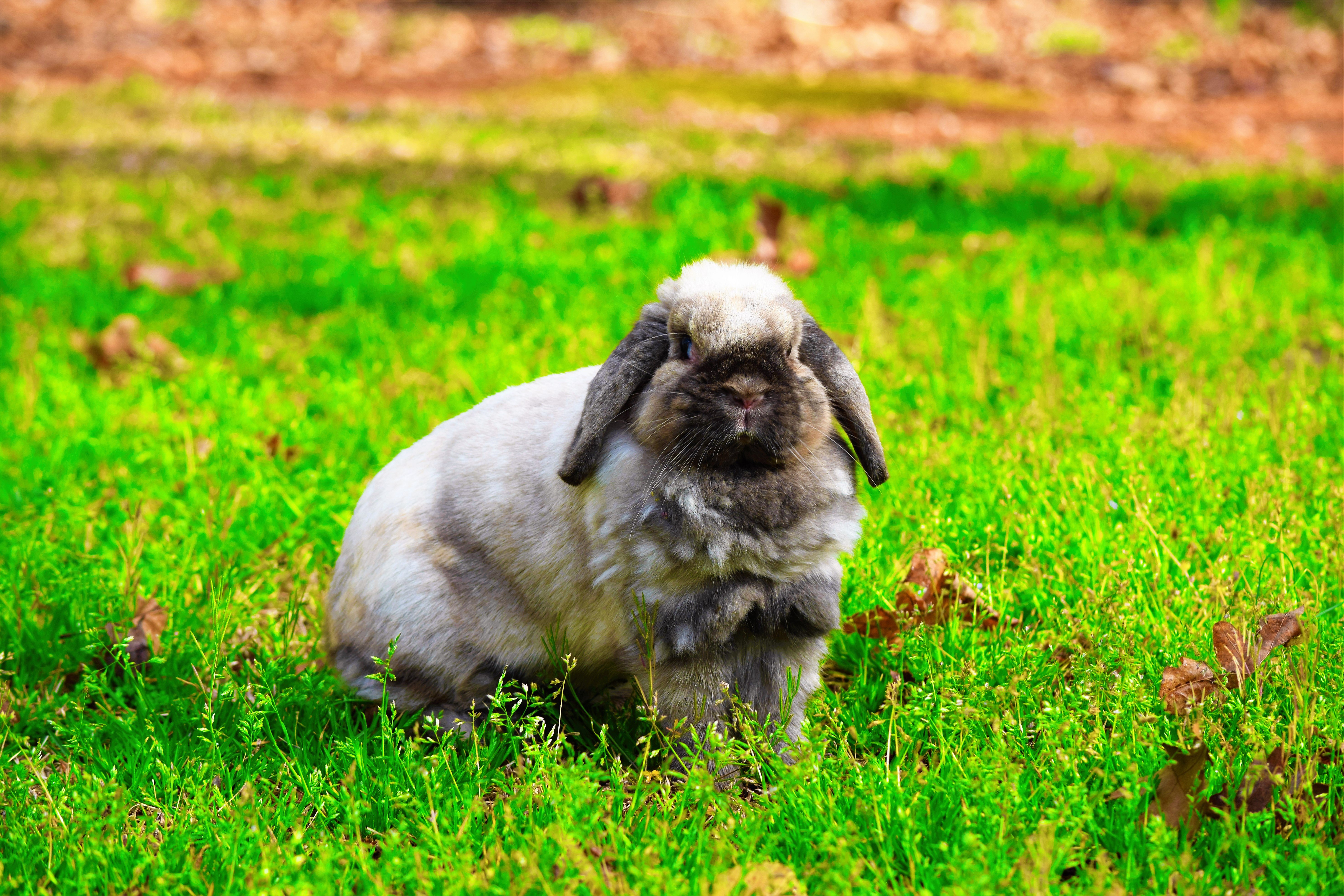
Molly, for example, was a big kale girl (in addition to being a big bunny in general, probably completely unrelated to the kale).
How can you tell if your rabbits are eating too many treats? Look at their feces.
This chart shows a few different types of rabbit feces. Both ‘normal feces’ and Cecotropes are normal, with rabbits actually eating Cecotropes to digest the nutrients a second time. The ‘soft feces’ occurs when a rabbit is improperly digesting its food, which is usually caused by a combination of too little timothy hay and too many treats. The solution? A diet of purely timothy hay for a few days typically fixes this. Go to a veterinarian if the issue persists.
Small feces indicates that a rabbit is dehydrated, whereas feces with fur indicates that a rabbit is not properly digesting some of its own fur that gets consumed when eating hay and also grooming. With a dehydrated rabbit, the answer is simply to provide more water. With feces that has visible fur in it, the rabbit would benefit from more acidic treats – my rabbits liked dried papaya for this purpose and received a small piece every few days, sometimes more often when shedding.
When it comes to water, some people provide water bottles and other people provide water bowls. The only real requirement is to ensure that water is always provided, meaning that the water container is never empty and never completely inaccessible (e.g., frozen or leaking).
Proper Shelter
Much like food, proper shelter is an oft-misunderstood aspect but, if properly understood, can be executed very easily and inexpensively. Only a few, but very crucial, aspects should be noted.
First, rabbits are prey species with a very excitable heart. This rather unfortunate combination sets up rabbits for heart attacks when approached by unfamiliar humans and animals if in an improper shelter. A rabbit is often unable to distinguish friend from foe, and whether it’s a giddy toddler running at the rabbit or a curious golden retriever or cat, a rabbit’s heart might not be able to take that stress if the rabbit feels completely exposed and vulnerable.
The solution to this issue is two-fold: A rabbit’s shelter should ideally be raised above ground-level, which is fairly standard for most rabbit hutches and a lot of indoor rabbit cages. Additionally, a rabbit should always have access to a ‘privacy area’ or ‘hide,’ which is just an area with three solid walls, a solid floor, and a relatively smaller doorway. This part of their living area is designed to mimic a burrowed hole that a wild rabbit would make to escape predators, which is what keeps most wild rabbits from dying of a heart attack at the sight of predators.
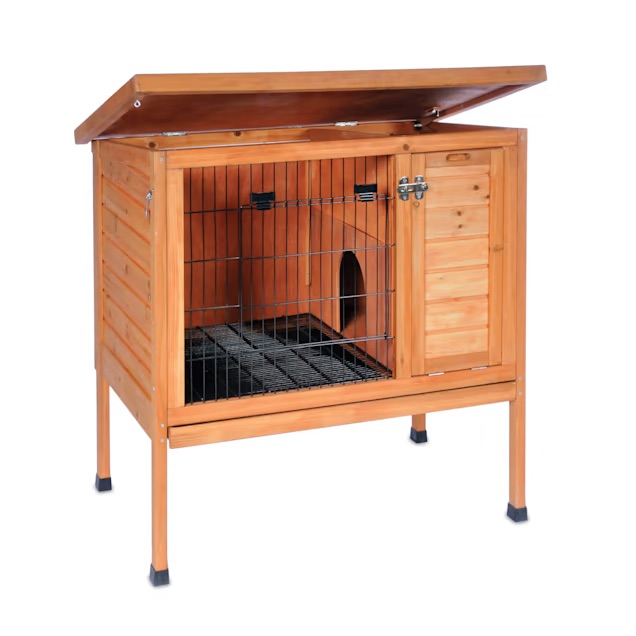
Rabbit hutch design that (1) is raised and (2) has a privacy area. Note that this rabbit hutch should not be exposed entirely to the outdoors, but left in a sheltered area like a barn, etc.
Obviously, rabbits do have functioning memory so, with proper care and gentle handling, most pet rabbits will warm up to you, your children, and even your pets (my rabbits didn’t mind our boxer bulldog and often chased our cats around the back porch). As such, keeping a rabbit outside its enclosure is encouraged once it feels comfortable enough to leave, but denying a rabbit the ability to hide in a safe area will inevitably lead to bad results when it feels unsafe.
Lastly, the flooring of a rabbit enclosure is crucial. If you’ve played with your dog or cat for any amount of time, you would’ve noticed pads on their paws in addition to their digits (e.g., toes) and claws. For dogs and cats, those pads protect their feet. Rabbits do not have these pads, and instead simply have a thicker layer of fur on the bottom of their feet. Beyond that thicker layer of fur, rabbits simply have a thin layer of flesh in between the outside world and their bones. Certain flooring types, namely thin chicken wire, will penetrate that layer of fur, which effectively leads to bone-on-wire contact. With enough bone-on-wire contact, the flesh will begin to irritate (“sore hocks”), causing the rabbit to shift its gait and cause further skeletal issues and even digestive issues from being unable to excrete feces in a normal position (i.e., pooping on itself).
The solution to rabbit flooring? Resting mats can be helpful in wire enclosures, along with solid surfaces for the rabbit to be able to comfortably lay down on. There are coated versions of chicken wire and other thicker ways to provide flooring, which are great for ensuring feces falls out of the shelter, but rabbits still need some solid surfaces to rest on. As a final flooring note, rabbits can be litter trained fairly easily which negates the need for wire flooring.
Monitoring Weather
With rabbits being such small creatures, the average person often comments that the cold weather must be brutal on them. In reality, most rabbits do fine in cold weather, even down to negative twenty degrees Fahrenheit. Now, a few caveats are worth noting for rabbits in cold weather. First, that temperature threshold applies to certain fur thicknesses – thinner furred-rabbits (like velvets) will not have as much of a cold weather advantage. Second, that temperature threshold is dependent on the rabbit being dry. Blowing rain into a rabbit’s shelter can disrupt their resiliency to low temperatures. Snow itself is not problematic, but melted snow (and almost all snow melts pretty quickly in North Carolina) poses the same problem. If a rabbit gets wet in cold temperatures, it is best to dry it off and bring it indoors.
Hot weather, usually defined as anything above 85 or 90 degrees Fahrenheit, is far more problematic for rabbits in the South. Heat stroke is a major problem for rabbits because their fur coats are simply too thick to take hot weather. To mitigate heat, rabbits can be exposed to indirect fans (rabbits will intentionally avoid fans directly blowing on them) and frozen water bottles (which admittedly melt within an hour or two of these temperatures). Putting any outdoor rabbit shelters in a shaded, well-ventilated area can help on most days, but eventually a day will come where it’s 90 degrees Fahrenheit even in the shade. On those days, it’s best to have a contingency plan to bring rabbits indoors with air conditioning.
Basic Veterinary Concerns
In addition to the above-discussed issues (sore hocks with chicken wire floors, sensitive hearts, fecal indicators, etc.), a few other medical issues are worth generally noting.
To finish off the discussion on malocclusion and how timothy hay prevents it, a rabbit owner should know that their rabbit’s front teeth (incisors) are always growing, meaning that a rabbit will always need something to chew on to prevent overgrowth (referred to as malocclusion). A rabbit’s chewing on fresh timothy hay will induce teeth grinding that prevents malocclusion. Providing chew toys, such as wooden blocks or stuffing timothy hay into an empty paper towel roll, also accomplish the same goal. Speaking from personal experience, if you do not provide your rabbit with something to chew on, they will find the most inconvenient part of your home to chew on (typically charging cords, whatever shirt you’re wearing while you put new food in their enclosure, and furniture legs).
If a rabbit develops malocclusion, get its teeth trimmed by a veterinarian. It is very easy to break a rabbit’s incisors with poor trimming techniques, which is extremely hard to fix and usually is fatal for the rabbit. For a rabbit with malocclusion, teeth trims should be performed about once a month (timing is rabbit dependent) and the rabbit may need an adjusted diet due to chewing issues. Again citing personal experience, rabbit teeth trims are not very expensive (often around $30 per trim, though my data is a little outdated at this point).
General rabbit health can be monitored through four measures. Put simply, if your rabbit is eating, drinking water, urinating, and pooping normally, the rabbit is probably fine. If a rabbit stops doing one of those things, it’s best to go to a rabbit savvy veterinarian pretty quickly because rabbit diseases can be pretty efficient in killing them. Gastrointestinal stasis (GI stasis) is pretty common for rabbits that stop eating, but also not that hard to treat if caught early.
To put one easily-identifiable symptom on here, if your rabbit has rapidly (over the course of a few hours) developed a ‘head tilt,’ go to a veterinarian immediately, This symptom is usually the sign of a major infection of some type that can be fatal if not immediately treated.
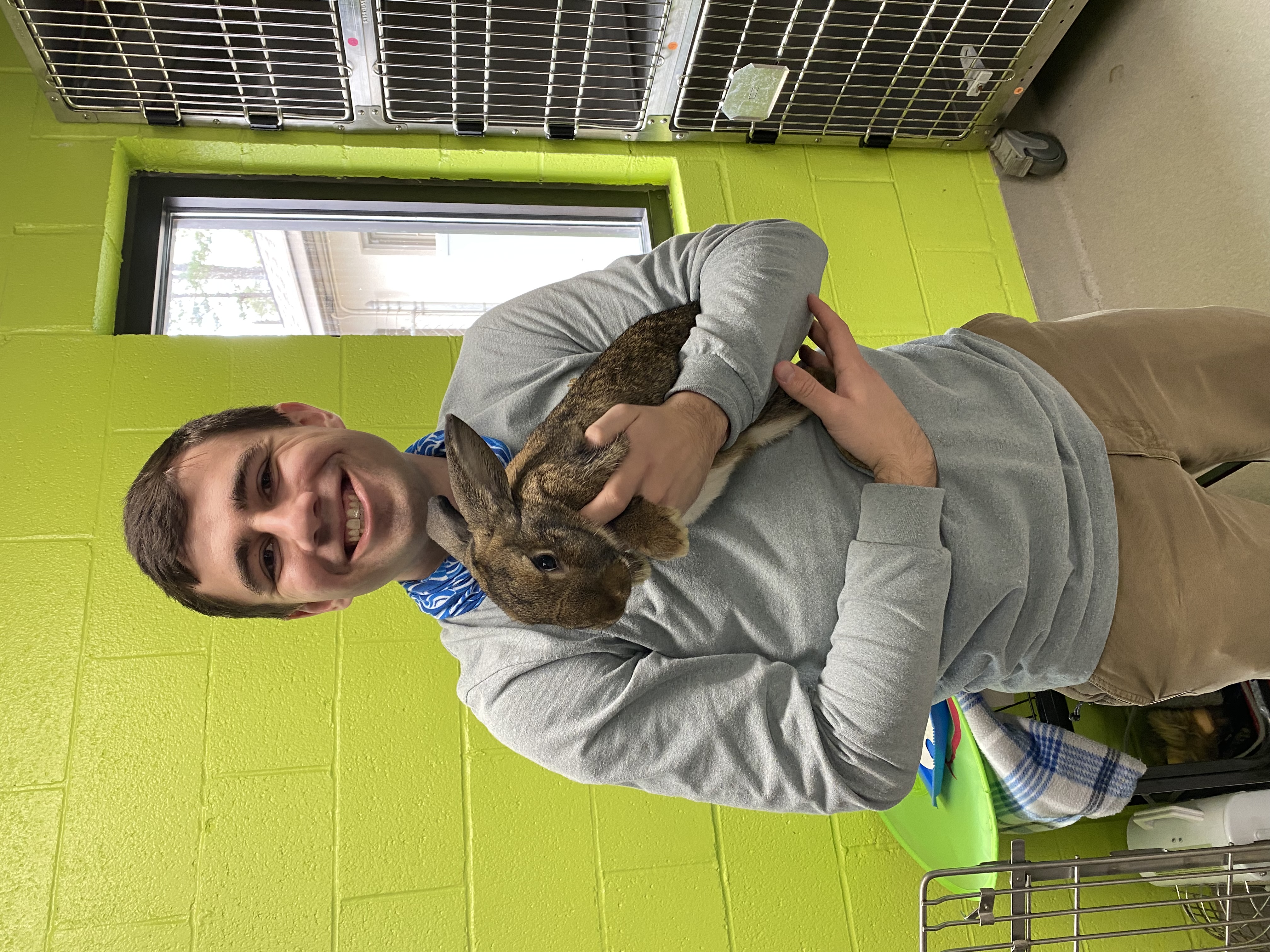
The Author holding a shelter rabbit that was spayed after unexpectedly delivering a full litter to the shelter staff!
Though not every veterinarian performs rabbit alteration (i.e., neuters and spays), getting your rabbits altered will prevent numerous issues. For owners of male rabbits, neutering will generally decrease aggressiveness and urine spraying. For owners of female rabbits, the probability of uterine cancer is anywhere from 50-80% in un-spayed female bunnies over four years old – which makes spaying paramount.
Obviously, rabbit alteration is vital for minimizing rabbit overpopulation. Depending on breed, rabbits reach sexual maturity (i.e., breeding age) at 3-7 months old and their gestation period (pregnancy period) is typically around 30 days. Rabbit litters can consist of one to fourteen kits (baby rabbits), but around seven kits is pretty typical. And female rabbits can get pregnant again a day or so after giving birth. Point being, either alter your rabbits or keep the intact rabbits separated by sex.
A discussion of rabbits would not be complete without a brief mention of Rabbit Hemorrhagic Disease (RHD), which has become an increasingly more notorious issue. In short, RHD is a highly contagious viral disease with its most prominent symptom being rapid, onset death. There are preventive vaccines, though supplies are not always very high. The issue has become so abundant among wild and domestic rabbits that the USDA has issued guidance.
Final Thoughts
Getting a new pet can be stressful, but rabbits are a lot of fun if properly cared for. Rabbits are quiet, relatively calm, and often enjoy being held. Rabbits can be great for families with small children and families with pets, but also are easy pets for older people who cannot handle a rambunctious dog or elusive cat. To put your rabbit in its best position to succeed, make sure it eats lots of timothy hay, drinks lots of water, and has a proper shelter that caters to its prey instincts and paw-related issues. Keep an eye on the weather and a few health issues, and you will be in a great position to care for your new rabbit!
The Author is a former volunteer of Athenspets, Inc., a Georgia-based 501(c)(3) non-profit that does a myriad of great things for pets (e.g., sponsoring pop-up vet clinics, supporting animal shelters and other pet-related non-profits, supporting investigations of domestic animal ordinance violations, etc.) in Athens and beyond. In his role at Athenspets, he traveled the state of Georgia to train animal control officers, law enforcement officers, veterinarians, the Georgia Department of Agriculture, prosecutors, and judges on how animal welfare laws, regulations, and ordinances apply to scenarios involving rabbits. Prior to this role, the Author was a member of the American Rabbit Breeders Association and showed mini lop rabbits in addition to fostering the occasional pet rabbit who was a failed Easter bunny.




